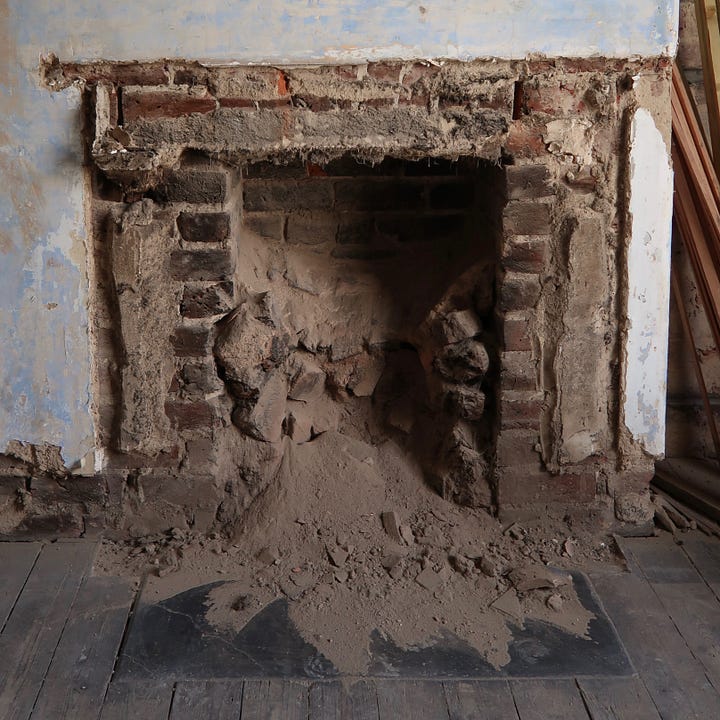
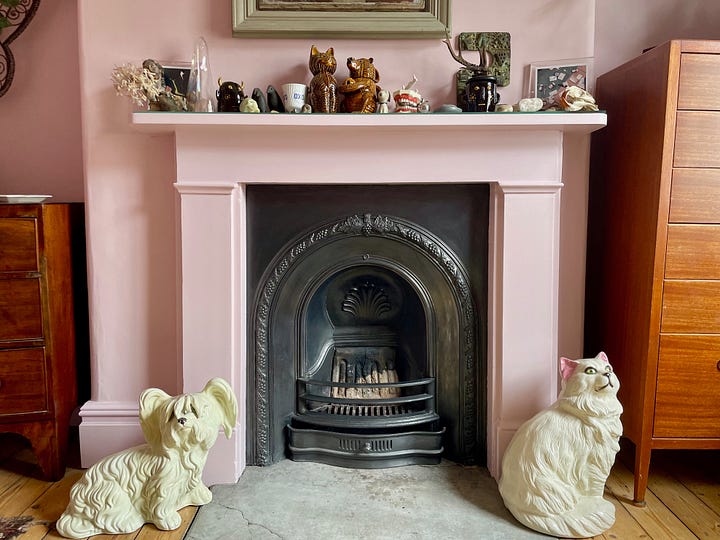
Before we moved into our cottage on the site of the old Swan Hotel, we knew there had been a problem with damp in the main bedroom. A surveyor assured us the previous owner had found the source and fixed the problem, and the walls just needed time to dry.
He was wrong.
We uncovered layer after layer of attempted fixes – everything from filling the soffits with packing chips to rebuilding part of the wall with beach pebbles and covering the wet brickwork with asbestos sheets.
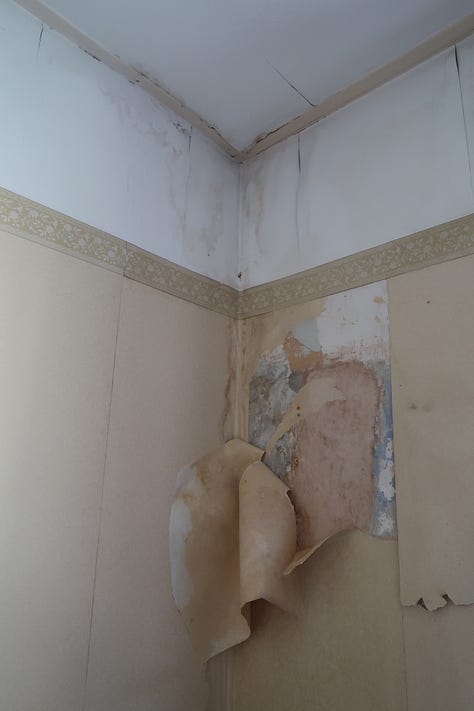
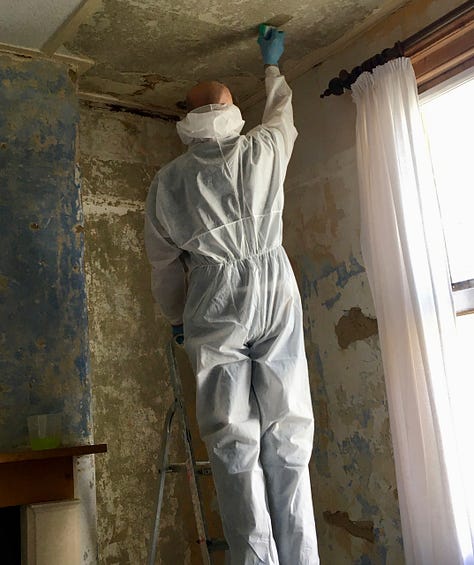
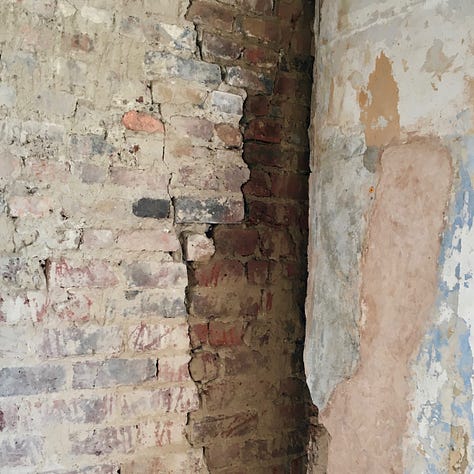
Taking down the asbestos (in a full hazmat suit) revealed a crack down the bedroom wall from ceiling to floor that was caused when a bomb exploded nearby in 1943.
We spent months prostrate on the loft's ceiling joists to reach into the rotten soffits, hoping to find the source of the ever-spreading damp patch. As far as we could tell by touch alone the wall above the wet patch was bone dry.
We sealed cracks in the exterior render, rebuilt a dilapidated firewall, fitted new flashing and replaced cracked roof tiles (£20,000!).
During this chaos, we slept on a mattress on the floor, constantly dragging it around the house to avoid the worst of the dust and debris. At the time I was working with an American luxury real estate company and had regular Zoom calls to discuss upscale lifestyle content and multi-million-dollar properties. The irony that I was living in a building site and sleeping on a filthy, battered mattress wasn’t lost on me.


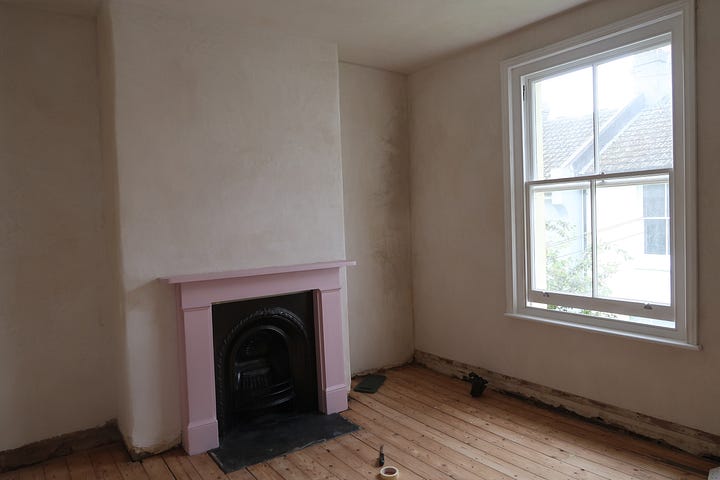
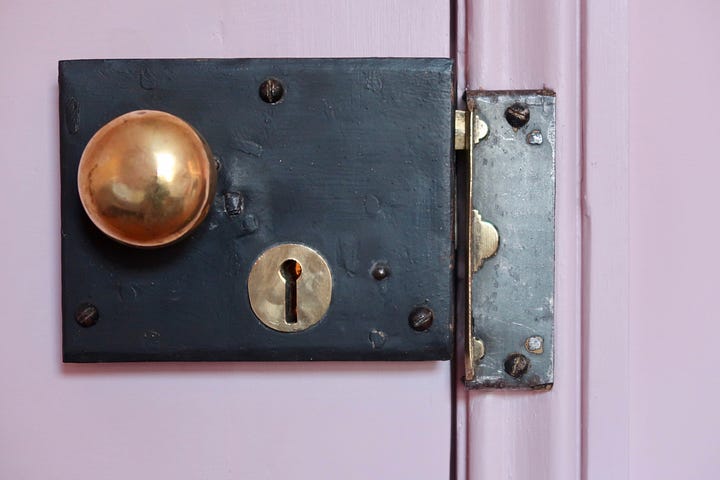
When a damp-proofing specialist told us we’d fixed the problem, we decorated the bedroom with dusty pink lime plaster, only to find the damp returning and spreading down the walls a few days later.
After two years, a succession of builders, and overconfident damp-proofers, we discovered the root of the problem. It wasn't a leak; it was the building materials. The Victorian mortar was too sandy and absorbed moisture from the damp seaside air. The chances are the house had never been 100% dry.



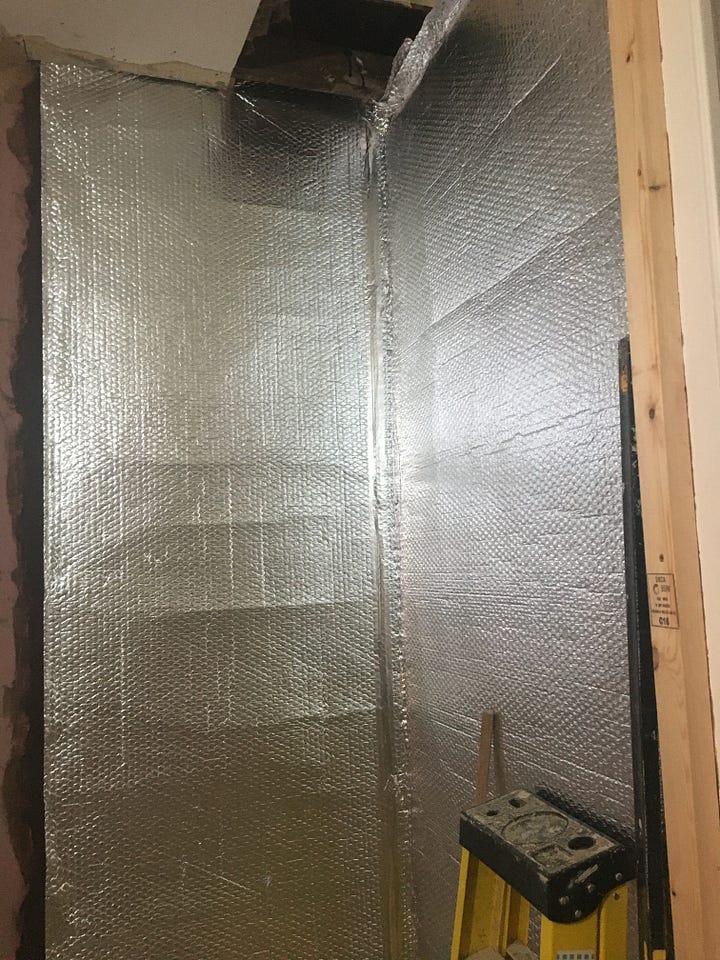

After much soul-searching, we ripped out our beautifully restored lime plaster and sealed the bricks behind four waterproof layers. It worked, and now, finally, the bedroom is dry!
We even opened up the chimney for cosy fires in the winter.
Our favourite artworks adorn the walls, including an oil sketch by Vladamir Serov (President of the Soviet Academy of Arts), a pair of Polaroid prints by Nan Goldin and a piece by Sister Mary Corita Kent, the screenprinting nun. On the mantelpiece, we have a collection of curios we’ve collected over the years.
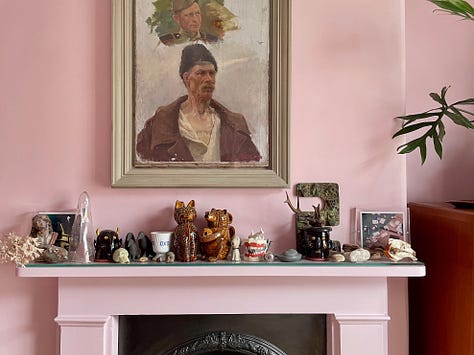
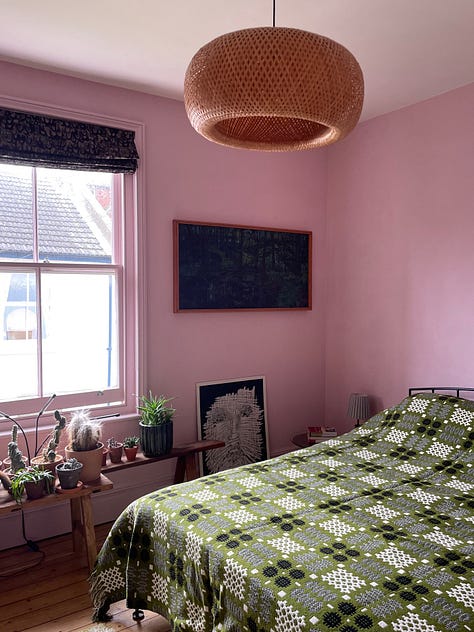


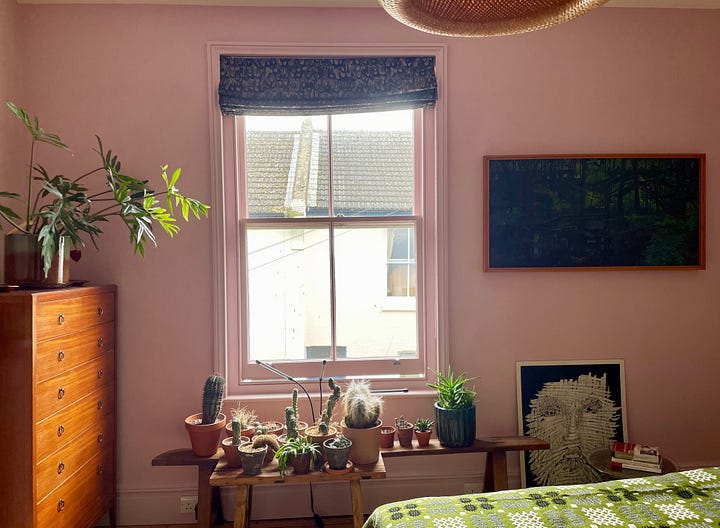
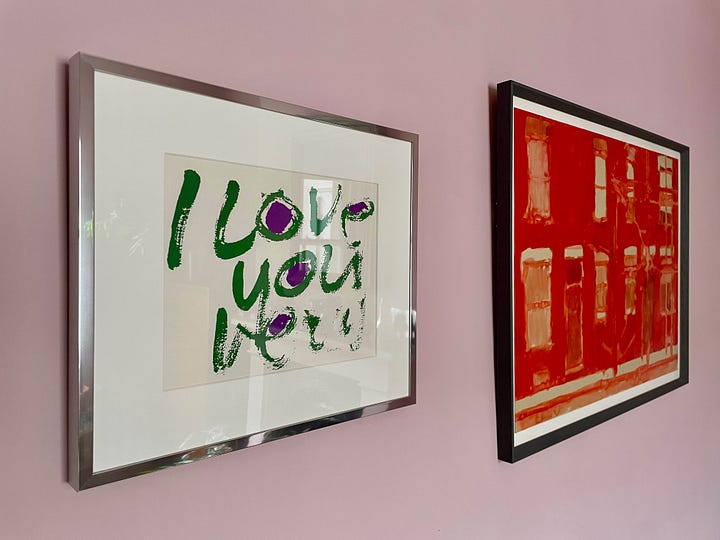
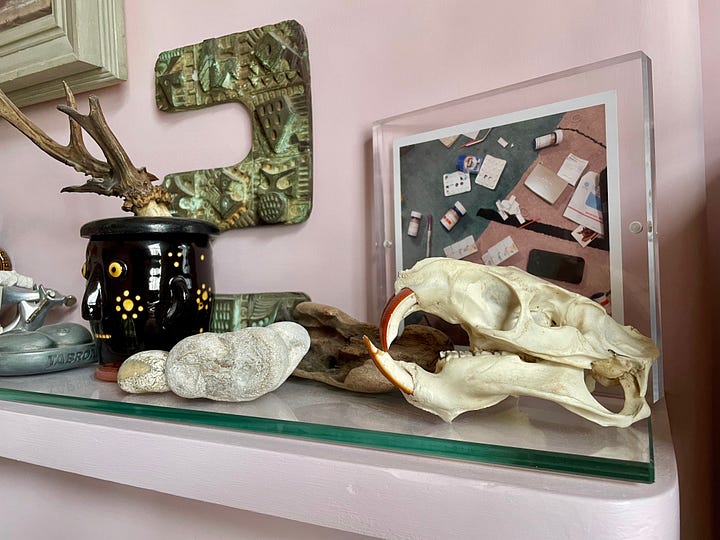




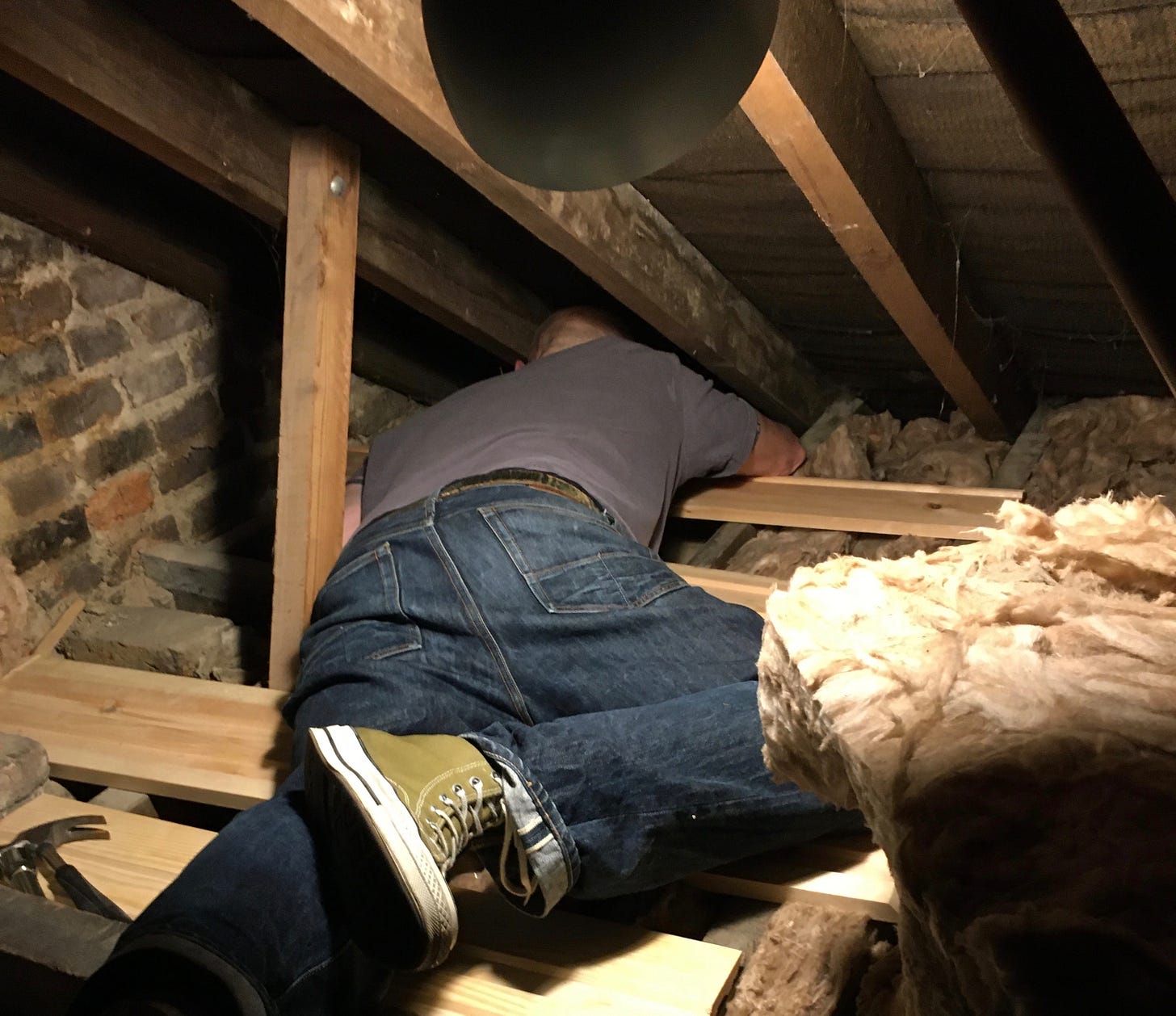


Wow, this is a fantastic journey you are on.
Ha. This reminds me of the damp patch in our previous kitchen. Impossible to solve. Eventually we stripped the plaster (and everything else) off the wall and left the bare brick to wick into the room.